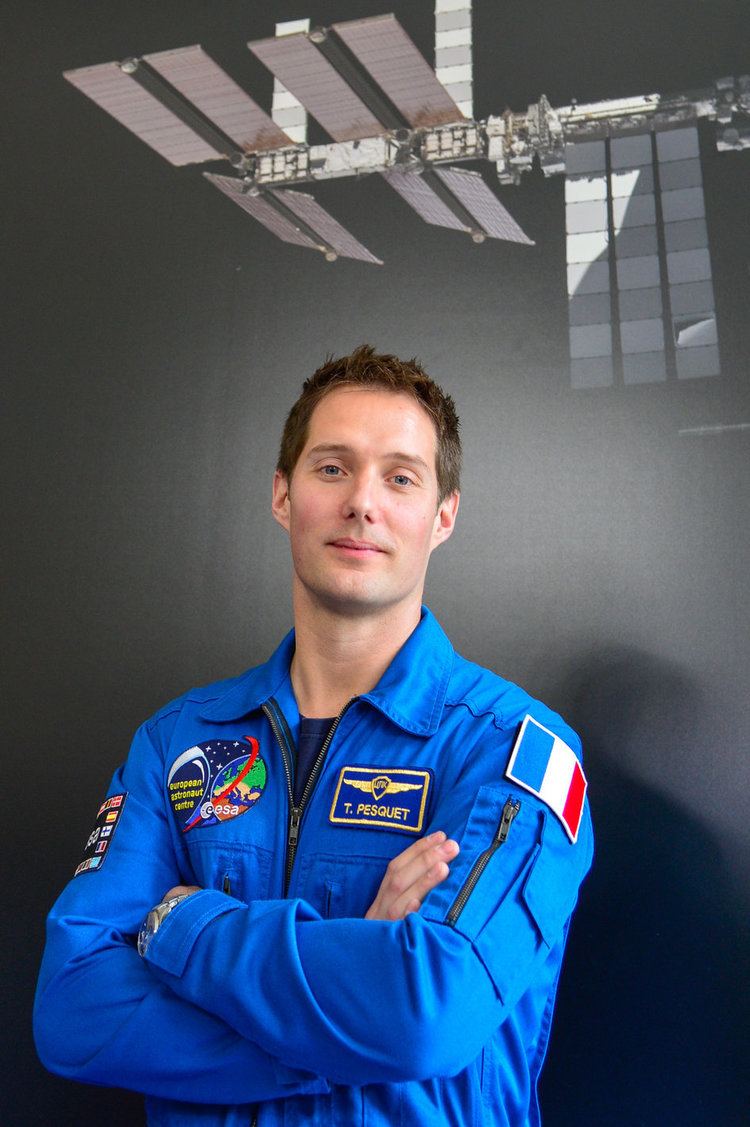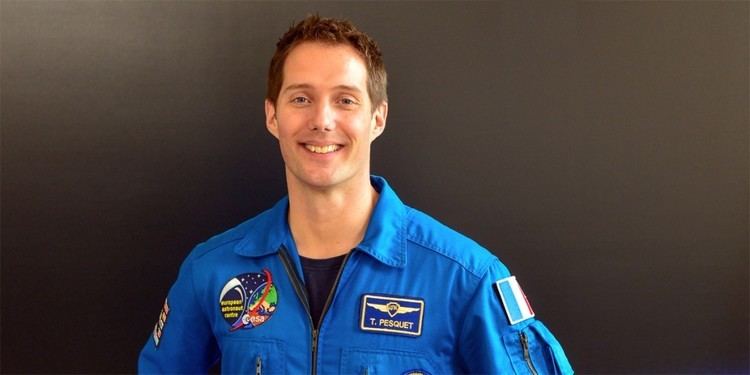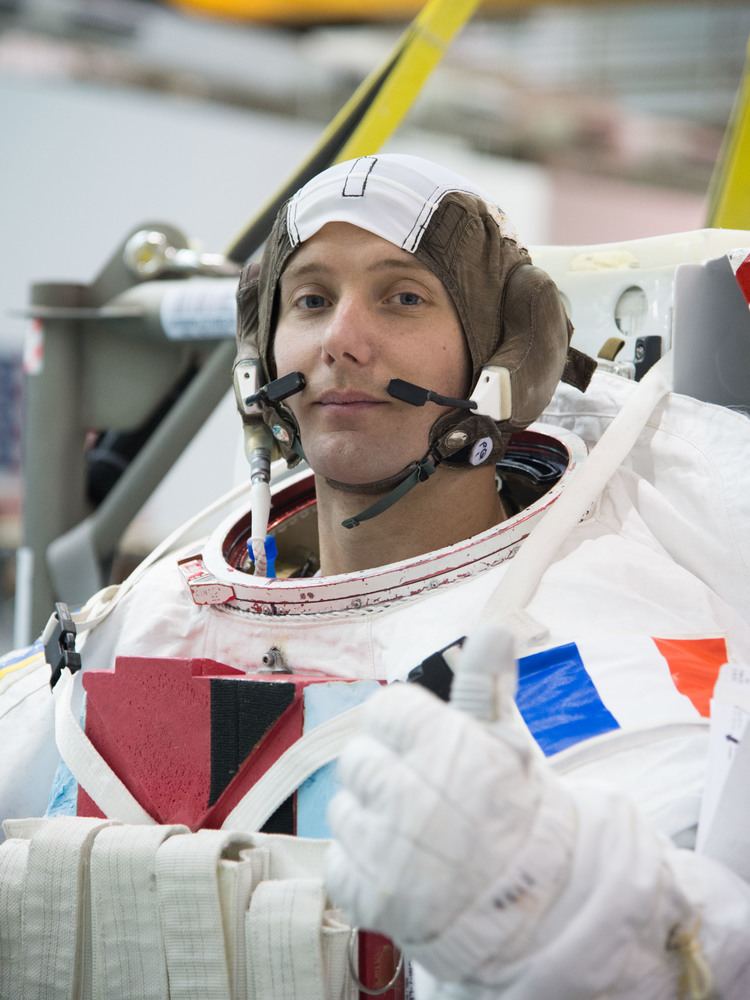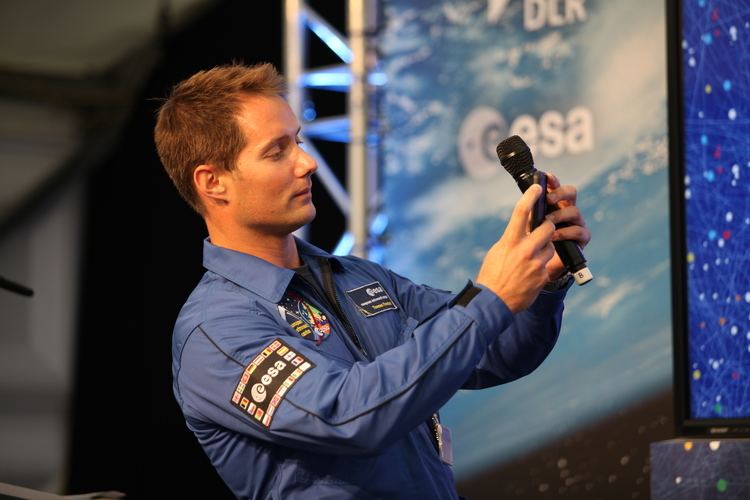Nationality French Name Thomas Pesquet Mission insignia Education Lycee Pierre-Corneille | Selection 2009 ESA Group Status Active | |
 | ||
Other occupation Engineer, Pilot in command Similar People Andreas Mogensen, Leopold Eyharts, Jean‑Francois Clervoy, Claudie Haignere, Jean‑Loup Chretien Profiles | ||
New esa astronaut thomas pesquet
Thomas Gautier Pesquet (born 27 February 1978) is a French aerospace engineer, pilot, and European Space Agency astronaut. Pesquet was selected by ESA as a candidate in May 2009, and he successfully completed his basic training in November 2010. From November 2016 to June 2017, Pesquet was part of Expedition 50 and Expedition 51 as a flight engineer.
Contents
- New esa astronaut thomas pesquet
- Thomas pesquet bio
- Personal life
- Education
- Career
- In ESA
- Expedition 5051
- References

Thomas pesquet bio
Personal life

Pesquet was born in Rouen, France and considers Dieppe his hometown. He is the younger of two brothers. Pesquet is a black belt in judo and lists basketball, jogging, swimming and squash as his favourite sports. He is an outdoor and adventure activities enthusiast, and enjoys mountain biking, kite surfing, sailing, skiing and mountaineering. He also has extensive experience with, and holds advanced licenses in, both scuba diving and parachuting. His other interests include travelling, playing the saxophone and reading.
Education

Pesquet graduated from the Lycée Pierre Corneille in Rouen, France, in 1998.

In 2001, he received a master's degree from the École nationale supérieure de l'aéronautique et de l'espace in Toulouse, France, majoring in space systems and space vehicle mechanics. He spent his final year before graduation at the École Polytechnique de Montréal, Canada, as an exchange student on the Aeronautics and Space Master.

Pesquet graduated from the Air France flight school in 2006. This led to an Airline Transport Pilot License-Instrument Rating (ATPL-IR).

He speaks French, English, Spanish, German and Russian, and is a member of the French Aeronautics and Astronautics Association (3AF), and of the American Institute of Aeronautics and Astronautics (AIAA).
Career
From October 2001, Pesquet worked as a spacecraft dynamics engineer on remote sensing missions for GMV, S.A. in Madrid, Spain.
Between 2002 and 2004, Pesquet worked at the French space agency, CNES, as a research engineer on space missions autonomy. He also carried out various studies on future European ground segment design and European space technology harmonization. From late 2002, he was a representative of CNES at CCSDS, the Consultative Committee for Space Data Systems, working on the topic of cross-support between international space agencies.
A private pilot, he was selected in 2004 for Air France's flight training programme. He went on to become a commercial pilot for the French airline, where he started flying the Airbus A320 in 2006. He has logged more than 2000 hours flying time on various commercial airliners, and has qualified as a type-rating flight instructor on the A320, and as a Crew Resource Management instructor.
In ESA
Pesquet was selected as a European Space Agency (ESA) astronaut in May 2009. He joined ESA in September 2009 and successfully completed Astronaut Basic Training in November 2010. Pesquet is the youngest member of the European Astronaut Corps, and the last of the ESA astronaut class of 2009 to arrive to space.
On 10 June 2014, NASA announced that Pesquet would serve as an aquanaut aboard the Aquarius underwater laboratory during the NEEMO 18 undersea exploration mission, which began on 21 July 2014 and lasted nine days. He has also taken part in ESA’s CAVES underground course in 2011 and NASA’s SEATEST II mission in 2013, furthering his experience in exploration.
In 2014, Thomas was chosen by ESA for a six-month mission to the International Space Station starting in November 2016. Thomas was also the backup to ESA astronaut Andreas Mogensen who flew to the International Space Station on a 10-day flight in September 2015.
Expedition 50/51
Pesquet launched from the Baikonur Cosmodrome onboard Soyuz MS-03 on November 17, 2016. He will spend six months on the International Space Station as part of Expedition 50/Expedition 51. Arriving at the ISS on November 19, 2016, he is the first French astronaut since Léopold Eyharts helped installed the Columbus European laboratory module during Expedition 16. His arrival marks the beginning of the European Proxima mission.
The Proxima mission will include 50 science experiments for ESA and CNES. The mission is named after Proxima Centauri, continuing the French astronauts' tradition of naming the missions after stars and constellations. The X inside the logo symbolizes that Pesquet is the tenth French astronaut as well as the unknown. The Proxima mission name was chosen in a competition, with the winning name given by 13-year-old Samuel Planas from Toulouse, France. The mission logo was designed by Thomas Pesquet and Karen Oldenburg.
Pesquet performed his first EVA with astronaut Shane Kimbrough on January 13, 2017. During the EVA, they prepared the infrastructure to replace the ISS batteries. The EVA lasted for 5 hours and 58 minutes.
On March 23 2017, Pesquet performed his second career EVA with Shane Kimbrough. The main objective was to prepare the Pressurized Mating Adapter-3 (PMA-3) for installation of the second International Docking Adapter (IDA), which will accommodate commercial crew vehicle dockings. The PMA-3 provides the pressurized interface between the station modules and the docking adapter. Expedition 50 Commander Kimbrough and Pesquet disconnected cables and electrical connections on PMA-3 to prepare for its robotic move on March 26, 2017. PMA-3 will be moved from the port side of the Tranquility module to the space-facing side of the Harmony module, where it will become home for the docking adapter, which will be delivered on a future flight of a SpaceX Dragon cargo ship. The spacewalkers also installed on the starboard zero truss (ITS) a new computer relay box equipped with advanced software for the adapter. The two spacewalkers lubricated the latching end effector on the Canadarm2 robotic arm, inspected a radiator valve suspected of a small ammonia leak and replaced cameras on the Japanese segment of the outpost. Radiators are used to shed excess heat that builds up through normal space station operation. The EVA lasted for 6 hours and 34 minutes.
On June 2, 2017, MS-03 undocked from the ISS, carrying Pesquet and Novitskiy back to Earth, concluding a 196 day mission in space. Whitson will remain on the ISS and return on Soyuz MS-04. MS-03 touched down just over 3 hours after undocking, concluding Pesquet's first spaceflight. Pesquet has spent 196 days, 17 hours and 49 minutes
